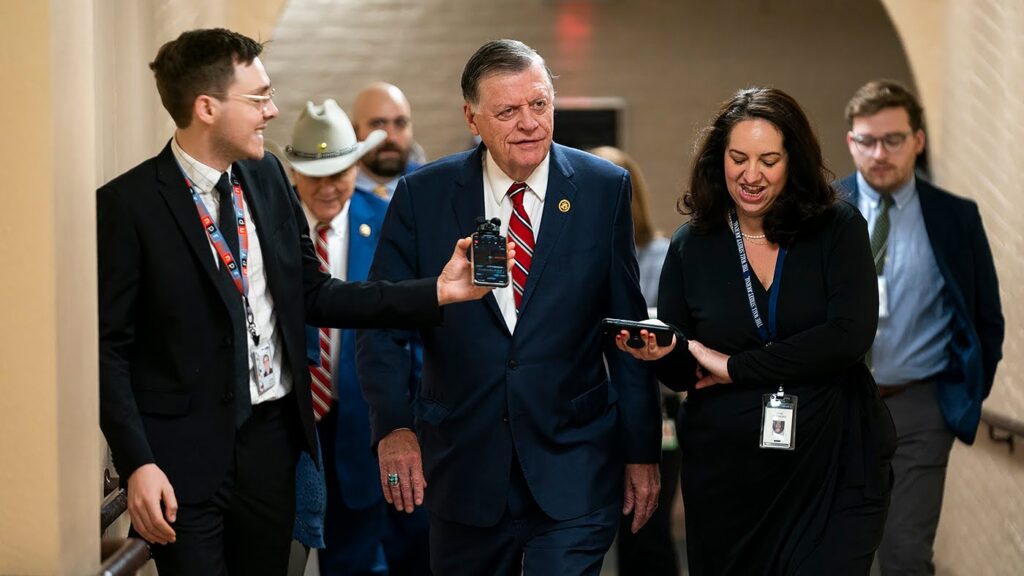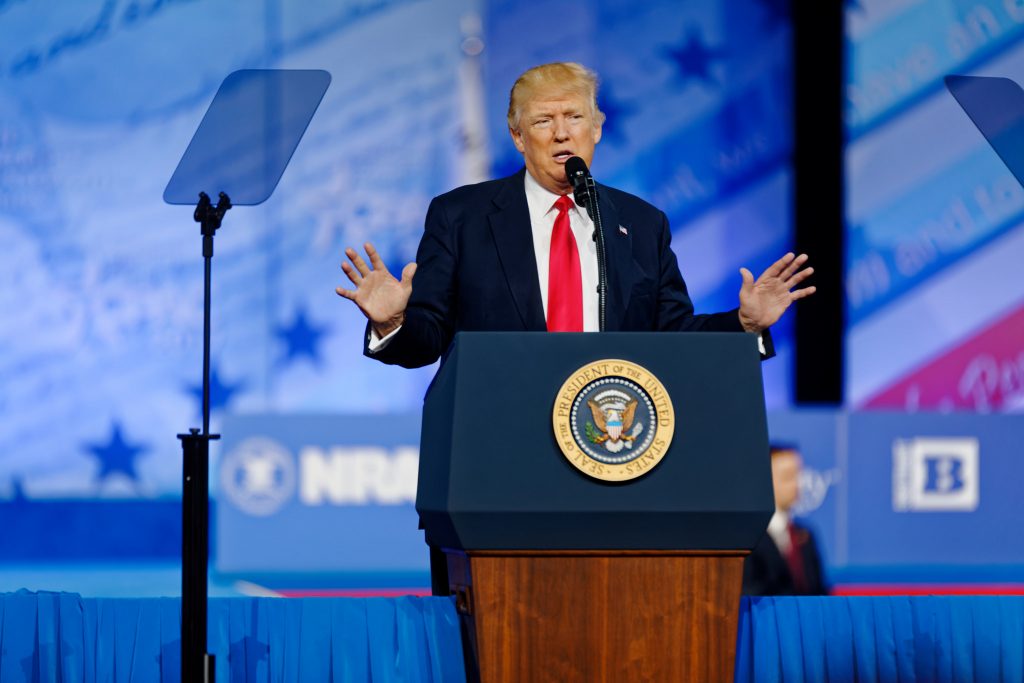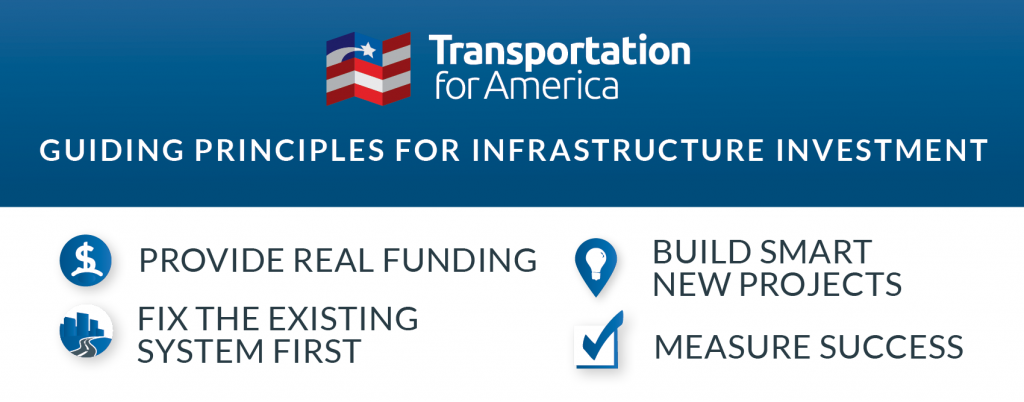
Eight questions to ask about infrastructure during tonight’s State of the Union

President Trump has been telling us that infrastructure is a top priority since his campaign. Tonight, in his State of the Union address, all signs point toward the president providing a preview of his infrastructure plan followed shortly by a public release. If enacted, this plan could reshape our communities. As we listen tonight, how should we evaluate what we hear from the president on infrastructure?
Update: Few details were shared during the president’s State of the Union speech (here’s the full text on infrastructure.) But until we hear answers, these eight key questions are just as relevant and remain in the front of our minds as we await a more detailed version of the president’s infrastructure plan. -Ed.

As we watch the president’s speech tonight, here are eight key questions, derived in part from our own set of four simple guiding principles for infrastructure investment, to help analyze what we hear tonight when it comes to transportation funding and policy.
1) Does this plan actually propose real funding? Or will they gut transit and Amtrak to pay for it? 11 minutes after promising the U.S. Conference of Mayors last week that the president’s plan would not cut existing funding to pay the tab for their proposal, White House advisor DJ Gribbin reversed himself and said the administration is in fact planning to eliminate funding for Amtrak, new transit construction, and passenger rail to pay for part of it. To be clear, neither cutting funding that cities and states rely on nor simply shifting existing money around within federal transportation programs represent real new funding.
Clarified to say, that the funding for the package “WILL be a repurposing of existing transportation program funding, like @Amtrak and transit.” #funding #infrastructure #budgetcuts @usmayors
— Sabrina Sussman (@SSussman) January 25, 2018
2) Other than slashing its funding, did you hear anything else about transit? In a dramatic shift, young people, empty nesters, and major corporations are voting with their feet and choosing to live and work in locations with access to transit. Is this administration serious about supporting the cities of all sizes that are investing their own dollars in transit to move people and connect them to opportunity? Amazon’s clear preference for a robust transit network in any potential host city for their second headquarters was a wake-up call for cities small and large, and like these state lawmakers in Indiana once opposed to transit, others have awoken to the reality that it’s a vital part of any metro area with a strong economy that’s competitive for talent. Whatever the president proposes for transit tonight, remember that this administration’s 2018 budget already proposed eliminating all funding to build or expand transit.
3) Will this plan shift the cost burden to states and localities? The federal government hasn’t raised the gas tax since 1994, so states and localities have been taking the hard votes to make up at least some of that difference between mounting needs and a stagnating federal gas tax. Whether the 31 states that have raised new transportation revenues since 2012 or the $2 billion in new local revenues for transportation raised in November 2016 alone at the ballot box, locals are already bearing the burden. Will this infrastructure plan meet them in the middle as a partner, or just further undermine local efforts to reinvest? And while some cities can go to the ballot or easily raise new revenues, many cities and smaller areas may not have the capacity to raise their own new transportation revenues to fill the gap.
4) Did you hear any recognition of the difference between financing and funding? We don’t lack financing for infrastructure projects, we lack the cold hard cash required to pay for them. Our highways and transit systems were built with real money, not financing gimmicks. Public-private partnerships and other financing tools can help, but they don’t replace real funding. The White House has consistently talked about unleashing private financing in infrastructure, but private financiers don’t invest in infrastructure as a charity, they expect to make money. If they’re financing a project with money up front, it’s because they expect to make more of it in the long-term through repayments of some kind, such as regular bond payments or a dedicated funding stream like toll revenues. We don’t lack for financing opportunities, we lack the money to pay that financing back. Incentivizing more private financing won’t fix that.
5) Where do rural areas, towns, and cities fit into this plan? The status quo prioritizes state DOTs over local governments. While larger metro areas receive some funds directly, cities themselves have no direct control of those federal transportation dollars. And though metropolitan areas drive our economy, will this plan recognize that fact by giving them greater access to federal transportation dollars? There are rumors that the plan could require 25 percent of the proposed funding be set aside for rural areas, which includes a lot of smaller cities. But even with such a requirement, that money would be directly controlled by the governor or their state DOT—not local communities. Will money for rural communities be spent on them, or by them? There’s a big difference between money being spent in their area according to someone else’s priorities, and controlling that money themselves.
6) Did you hear any focus on boring ol’ repair and maintenance? Any proposal that doesn’t prioritize repairing our existing infrastructure is not a proposal worth taking seriously. It makes little sense to build costly new infrastructure (which is equally expensive to maintain) without any accountability for maintaining what we’ve got. If the rhetoric is accurate and our infrastructure truly is “crumbling,” then simply building something new and shiny doesn’t solve the underlying problem. If your house has a leaky roof, are you going to take out a loan for an expensive new addition, or are you going to fix your roof first?
7) Will the plan prioritize building the smartest new projects, or just more of the same? If this plan produces any new money to invest in infrastructure, it should be awarded by the merits on a competitive basis to only the best projects. We know both that competition helps the best projects rise to the top, and that spending new money through outdated formulas will just lead to the same old projects. Will the president model his plan on successful competitive programs like TIGER, or will he just pour more money into the status quo and go ahead with his budgetary plan to eliminate TIGER?
8) Did you hear a call for accountability and measuring what we get for our billions in spending? Or just the same tired infrastructure rhetoric. Why spend more money on infrastructure if we don’t know that we’re going to be better off afterward? Why spend more if we don’t know that we’re going to create lasting prosperity or build a resilient framework for creating and capturing value? Spending more money on infrastructure without measuring success and considering the value of our investments is not only short-sighted, but wasteful and irresponsible. We need a transparent system of measuring performance and holding states and metro areas accountable for hitting those targets.
Our four principles place a new emphasis on measuring progress and success, rather than just focusing on how much it all costs. We want real funding for infrastructure, not just ways to borrow money or sell off public assets as a means to pay for projects. We want a real commitment to prioritize fixing our aging infrastructure before building expensive new liabilities. We want new projects to be selected competitively with more local control, spurred by innovation and creativity. And yes, we want to ensure greater accountability so taxpayers understand the benefits they are actually receiving for their billions of dollars.
So as you listen tonight (and when a specific plan is released), keep these eight simple questions in mind and ask yourself: did you hear the answers to these questions?
One thing is certain: this has definitely been the longest “infrastructure week” of all time. And it’s apparently not over yet.



